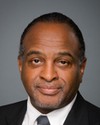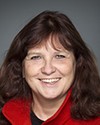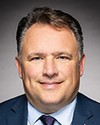No.
Evidence of meeting #24 for Canadian Heritage in the 41st Parliament, 1st session. (The original version is on Parliament’s site, as are the minutes.) The winning word was museum.
A recording is available from Parliament.
Evidence of meeting #24 for Canadian Heritage in the 41st Parliament, 1st session. (The original version is on Parliament’s site, as are the minutes.) The winning word was museum.
A recording is available from Parliament.
Conservative

Paul Calandra Conservative Oak Ridges—Markham, ON
I think I might have another question and then I'll just let you speak. How about that?
NDP

Tyrone Benskin NDP Jeanne-Le Ber, QC
There's a whole whack of ground to cover here. Now that you guys have introduced the whole church thing, it's problematic as well--problematic in a good way.
I've got a number of museums in my riding, including the Emile Berliner Museum, which is a nifty little museum on technical or audio history that is housed in the RCA building, also in my riding, which is home of the first studio to record an audio recording in Canada, which they're also trying to preserve. Right now it's being done through a labour of love. This gentleman has a massive room of just every possible technical innovation, including things that brought tears to my eyes, like the little portable record players that you pulled the speakers off and pulled the turntable down and listened to scratchy records that sounded muffled.
One of the big things I'm hearing is that the paleontology museum has about 10,000 pieces sitting in a warehouse because they can't show them anywhere. They don't have their own space. I know you said that building new museums at this point would be problematic.
How would you see being able to take some of these smaller museums, these labours of love, and finding homes for them, or temporary homes or exhibitions, so that people could actually get to know them and maybe raise some funds through that? I'll put it out there to anybody.
Executive Director, Canadian Museums Association
I think there are a lot of opportunities for museums to work together. This point has come up on both sides of the table. Some of the good examples are actually in Montreal, where virtually all of the museums worked together and established one warehouse, one conservation facility. It's in an old brewery in Old Montreal, and condos were sold on the top. It was a brilliant plan. The federal government contributed and so did the Province of Quebec. That kind of model I think can be built across the country. It's really a matter of the museums being willing to work together.
I think there are many cost-sharing ideas we can do. We brought in a group insurance plan that brought down the cost of insurance by about 50%. We would like to go to the next step, which is to do what the hospitals and universities have done, to set up what is called a reciprocal insurance program, where essentially you insure yourself and you save money.
There are a lot of opportunities to raise the visibility of small museums that are not known. If that comes out of 2017, I think that would be a great opportunity.
Monsieur Nantel, you brought up the question of passes. You may not be aware of a pass that is presently in place, and we're really proud of it. Every new Canadian, when they become a citizen at the signing-in ceremony, is offered a free pass for themselves and their family for one year to all the museums in Canada. We give that out. We had to convince our members to do it. Some of them thought we were going to lose money. This is a community, a constituency that we want to come into the museums. So we open the doors. We have behind-the-scenes visits and make them feel part of the community. So I think we can build upon that kind of thing.
We have looked at a pay-pass. It gets a little complicated. Canada's a really big country, you know. People are really not going to have the opportunity to travel. So it really needs to be done on a regional basis. We've looked at it, but the costs have just been really difficult for us to overcome. Holland, the Netherlands, has a similar pass. You pay 25 euros and get to visit all the museums in the Netherlands, a great idea.
NDP

Tyrone Benskin NDP Jeanne-Le Ber, QC
I'd like to move on to youth and basically generating the next constituency, if you will, of visitors. But also you expressed that it's been problematic training young people and retaining them in the sector. You've already mentioned about the Young Canada Works program and how input into that might benefit. What's being done to attract young visitors, people who pay money to go, other than schools?
Vice-President of the Board, President and Chief Executive Officer, Glenbow Museum, Canadian Museums Association
Yes, I'm happy to speak to that.
Something our museum has been doing for the past three years, very actively and very carefully, is audience development of the 25-to-35 audience or market, if you like. It has to do with how you develop your programming, what topics you treat, what people who are 30-something really care about right now. There are a lot of things about the economy, about ecology, etc., that really interest people. It then goes to really accessible and interesting programming and then lastly your marketing strategy. How active are you in the digital sphere? How engaged are you in social media? So there's a whole suite of the kinds of decisions that institutions are making to become more and more relevant all the time to that audience group.
I think what's exciting about something like the matching donation program is to introduce something these emerging or young professionals could really care about in an accessible and affordable way. We have a huge new membership of young professionals at our museum that we've gone after very carefully. We've developed a membership in a year and a half of 100 significant individuals in our city who are not 40 yet, but who are our next donors, etc. They want to be participating, they want to be involved in making the decisions. There are a lot of gen Y characteristics about these audiences that we need to be very cognizant of. A matching donation that they can get behind and argue for, as your volunteer or your donor, is exciting. There's lots of opportunity to do that.
NDP

Tyrone Benskin NDP Jeanne-Le Ber, QC
Do I have time? Okay.
Has there been...? We were talking about large travelling shows. Where are we now? The Van Gogh is where? Here or Montreal or Toronto? Here, okay, which I hope to get to see.
Would there be any value in going into schools with half a dozen items that you could show in a context that would get young people excited enough to come see the rest of the exhibition? Are there any programs like that, reaching out to young people?
Executive Director, Canadian Museums Association
These are the kinds of things that I guess in the interests of time we didn't elaborate on very carefully here.
One example is in Britain. The BBC, the British Broadcasting Corporation, just did an absolutely amazing series of the history of the world in one hundred objects, and this was on the radio. You couldn't see the objects, so they had to make the stories alive and compelling. It was an award-winning series and it was based on items out of the British Museum.
We think the same kind of thing could happen here in Canada to work with the CBC and do 150 iconic items of Canadian history that tell the story. And we'd like to encourage each museum in Canada, during 2017, to mount a special exhibition of the 100 most important things out of their community and the stories that go beyond them, which have to be done through the media and so on.
What we also find with this diversity of accessibility that's available is that people want to see the real thing. They come to the institutions, and in times of crisis they come to the institutions. When 9/11 happened, the museums in New York saw an increase in attendance. They were reaching out for some stability there. When SARS happened in Toronto and in Vancouver, the increase in attendance was there at our institutions. We saw that. It was that sort of reaching out, looking for stability and hope.
Conservative

Paul Calandra Conservative Oak Ridges—Markham, ON
We heard that during the Olympics the provinces provided information or had showcases of some of the things they do. In the context of Canada's 150th birthday, each province has significant history to talk about. I know we'll be celebrating a significant milestone in Montreal. We celebrated a milestone in Quebec. But how can we do more? We might not want to talk about les filles du roi, but it was something that's very interesting about Canada's history. The War of 1812 is another important aspect of Canada's history.
Have there been any discussions, both nationally and more locally, provincially, about asking each province in the context of 2017 to coordinate something that showcases their province? So if I travel the country in 2017 I know that I might visit your museum to see something, or I might visit a national museum to see something else, but I'll learn the story of a province based on what I see at the museums that you have. Have you started any coordinating on that at all?
Chief Executive Officer, Confederation Centre of the Arts
Thank you very much.
As I explained in my presentation, we are celebrating 2014 because it was the first meeting of the Fathers of Confederation in Charlottetown, and we have many celebrations planned for that year. There is a not-for-profit corporation that has been set up called PEI 2014. They are doing many things across the island, and the Confederation Centre is celebrating its own 50th anniversary.
All of those activities and things that we will do will carry us through to 2017, and new ones will happen in 2017. So we're very focused on what we believe is the first milestone on the pathway to 2017 as the Charlottetown Conference. So there are many opportunities for us to do that.
If I may, at this time I'd like to comment on Monsieur Nantel's passport idea. If that could please be an arts and culture passport so that it includes art galleries and theatres and museums across the country, our institution would be very appreciative of that. I think it's an outstanding idea.
Thank you.
President, Société des musées québécois
Perhaps we could talk about Quebec City. So far, much of the focus has been on Montreal. We saw this during the most recent budget. To my knowledge, I do not believe that there is much interprovincial coordination at this time. Perhaps this is something that the federal government could initiate, in the form of a round table with the provinces, for instance. Of course, we talked about Prince Edward Island, where it is rather obvious, since that is the birthplace.
Furthermore, I personally did not hear anyone talk about anything coming from other provinces, other than what I raised about Quebec, strictly speaking.
Executive Director, Canadian Museums Association
One idea that was touched on briefly in our brief was the idea of what happened in 1967. There was a train that was established, and each car was a mobile exhibit, as it were. We had eastern Canada, western Canada, the north, the prairies, and so on. We wonder if that is an idea you might want to consider. It would go across this country, and it would create a great deal of interest.
I would actually suggest, if that is a go, that you approach it differently from the way it was done in 1967. It was very top-down. I would do bottom-up. I would work with the museums and the provinces to design and create something meaningful that would be there and then could go across the country. The provincial museums in each province are ideal for that. There could be one car per province, perhaps, or you might go on a regional and thematic basis. It becomes a spark plug, a lightning rod, and communities get excited when it goes there, and so on.
Unfortunately, there are two provinces the trains can't get to any more, but I think it may have merit. A series of mobile trucks and vans can do that. We've done that in the past.
Chief Executive Officer, Confederation Centre of the Arts
May I compliment John McAvity on his idea about the train? I was personally on the discovery train of 1979 and 1980 that travelled for those two years to 120 cities and towns across the country.
In Newfoundland we actually had to put the train on a ship and sail it around the island because the gauge is different. It was such a moving experience for all of the people who worked on this train, and also for the people we visited. We landed at the top, at Botwood, Newfoundland. That's at the very top, and 3,000 people who lived there were standing on the dock waiting for us to come in so that they could see the history of Canada on this train.
I believe that a moving mobile exposition museum, our history of theatre and dance, etc., could take place for this celebration in 2017. I think it's a wonderful idea, because I've seen for myself what Canadian rural communities think about this idea.
Conservative

Paul Calandra Conservative Oak Ridges—Markham, ON
Mr. Chair, on a point of order, I know we're going to run out of time, but if possible could we have five minutes at the end to go in camera on committee business? There's something I want to share with the committee.
Conservative
NDP

Marjolaine Boutin-Sweet NDP Hochelaga, QC
Thank you.
I would like to bring something to your attention, Mr. Landry.
The Très-Saint-Nom-de-Jésus church is located in my riding, Hochelaga. The church has a Casavant organ. Several months ago, the archdiocese decided to turn off the heat, which is putting the organ at risk. Mr. Calandra talked about preserving heritage. It is not a question of building all kinds of museums or preserving churches, but in this case, this is one part of our heritage that we could protect. I think something needs to be done in that regard.
The question of research was also raised, but I do not think we spent enough time talking about that. The federal government can provide funding for research, but in which domains would it be most useful do so?
President, Société des musées québécois
If we are planning to celebrate an event in a few years' time, we could consider exhibitions produced by various museums. We can start to think about programs that will allow these institutions to begin working on these projects well in advance. Indeed, people must understand that conceiving an exhibition does not happen in just three months or six months.
Furthermore, if we want to present products that are really interesting, well documented and thorough, and to allow institutions to work on their collections and artifacts, we need to begin the process rather early. Announcements could be made very soon about a program that will be managed by Canadian Heritage. This could involve allowing institutions to present projects and to begin doing research.
I meant to say in my presentation that we should use this celebration as an opportunity to irrigate, so to speak, the entire network of museums across Canada. We could implement programs to bring the museums together and to help them get out of the slump that they seem to be in right now.
As for churches and the organ that you mentioned, I think we need to focus on communities, and ensure that they become involved in the process and that they themselves determine where the most crucial needs are.
One community might want to carry out a major project on a church, for instance, take it over and restore it, while another community might want to focus on another kind of heritage building. Instead of going from the top down, the best approach for communities might be to work from the bottom up. Basically, what I mean is that we need to use this event as an opportunity to ensure that the money invested is put to good use and that communities get the money they really need.
Executive Director, Canadian Museums Association
There are a number of federal programs to fund research, but museums are not eligible to apply. For example, the Social Sciences and Humanities Research Council is a huge funding council, but that money is restricted to higher-education institutions. We assert that museums should be eligible for that kind of funding. If you can investigate that to see if it can happen it would be a huge step forward for our community.
Conservative

The Chair Conservative Rob Moore
Thank you, Madame Boutin-Sweet.
Thank you to our panel of witnesses. Thank you for coming with very specific recommendations that I think our committee will find very helpful. Thank you for answering all the questions our members had. We look forward to working with you in the future.
We'll suspend for 30 seconds and go in camera.
[Proceedings continue in camera]